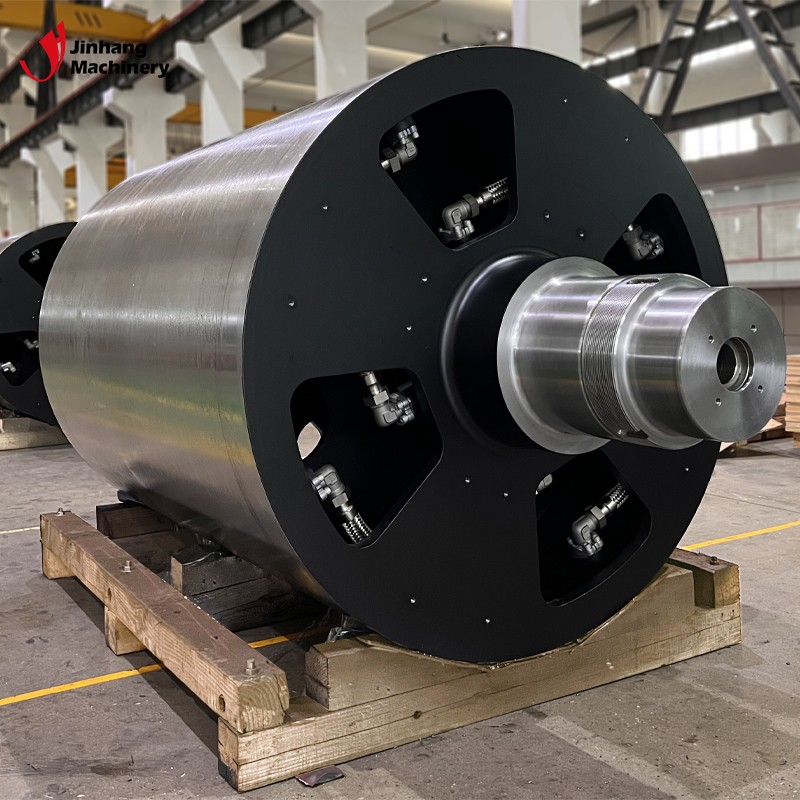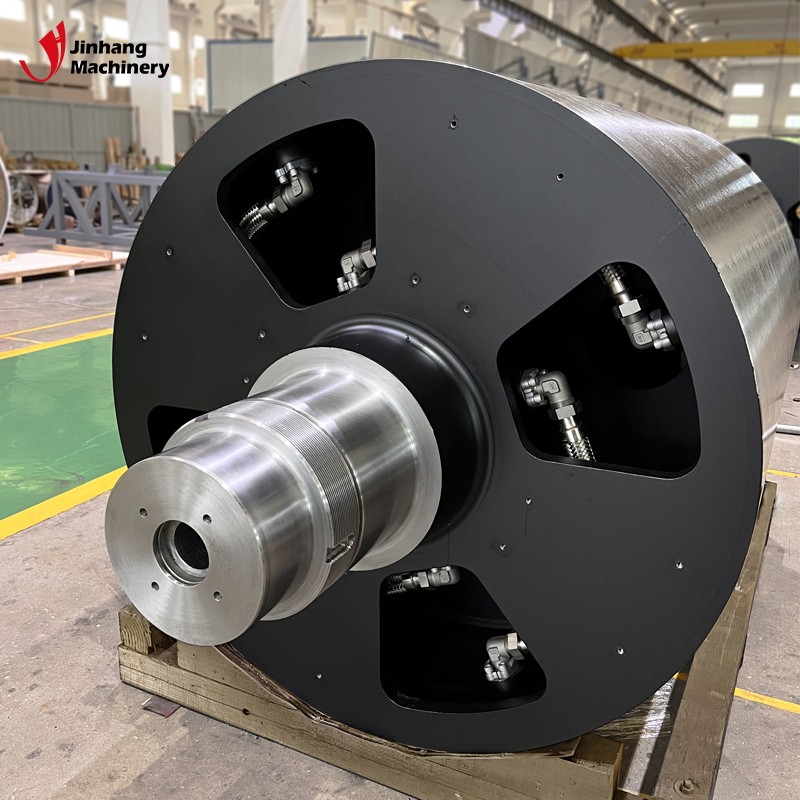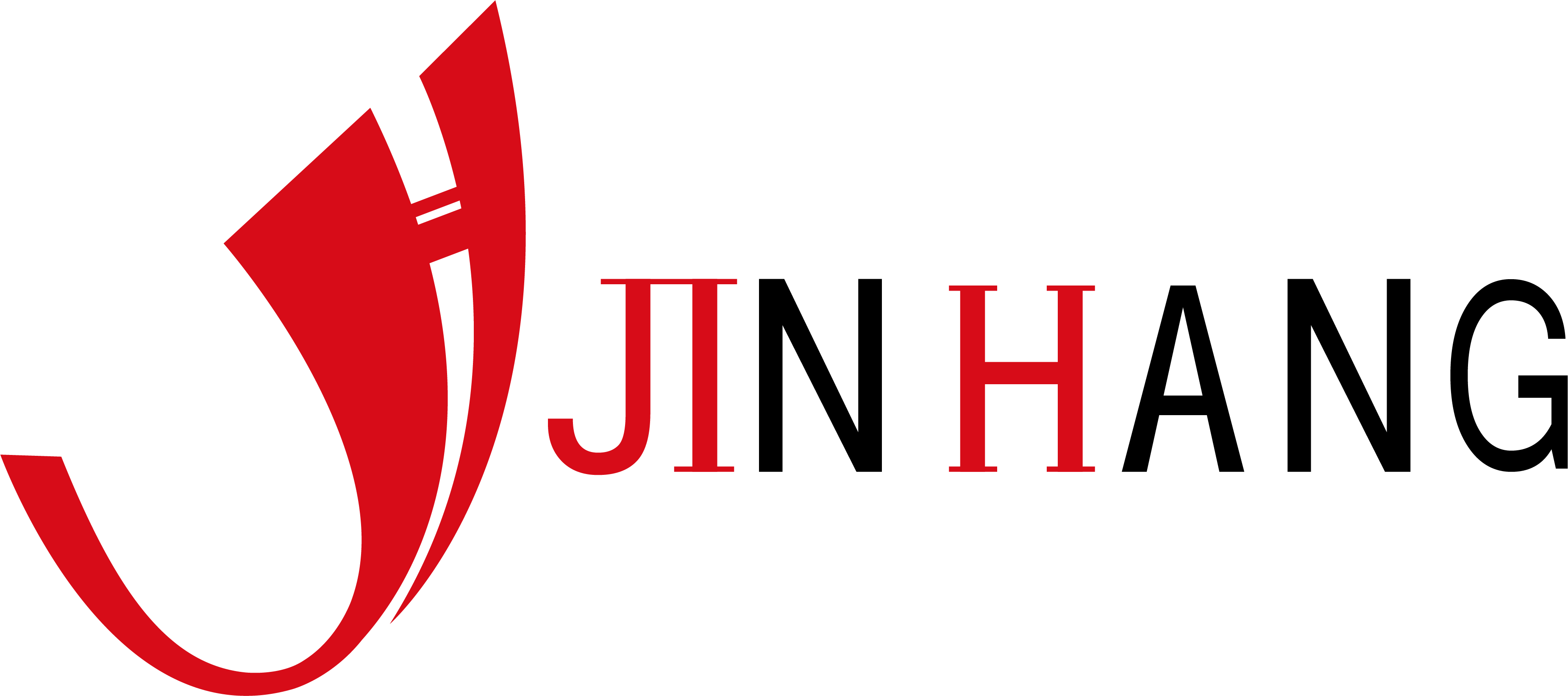What are the manufacturing materials of industrial heating roller?
In the industrial production process, heating roller, as a key equipment, is widely used in many fields, such as plastic processing, rubber processing, textile, paper and packaging industries. They are usually used to heat materials to help realize the functions of material molding, drying, heating and curing. Choosing the right heating roller material is not only related to the service life of the equipment, but also affects the production efficiency and the quality of the final product.
There are many kinds of manufacturing materials for industrial heating roller, each of which has different characteristics and advantages and is suitable for different working environments. This article will introduce the common manufacturing materials of industrial heating roller in detail, analyze their characteristics, applicable scenarios and selection principles, and help enterprises make more reasonable material choices in the production process.

What is industrial heating roller?
Industrial heating roller is a kind of equipment used for heating, drying or heat treatment of materials, which is widely used in the field of thermal processing. It transfers heat to the surface of the material through rolling action to achieve processing effects such as heating or heating curing. According to different application requirements, industrial heating roller can be equipped with a variety of heating methods, such as electric heating, steam heating and oil heating.
During the heating process, the surface temperature of the roller usually needs to be kept within a certain range to ensure the quality of the processed material. To this end, the roller material needs to have not only good thermal conductivity, but also high strength, wear resistance and corrosion resistance. Therefore, choosing the right roller material is a key factor in ensuring the heating effect and long-term stable operation of the equipment.
What are the options for the manufacturing materials of industrial heating roller?
The materials of industrial heating roller mainly include metal materials, composite materials, ceramic materials, etc., and the performance and application range of each material are different. The following are several common heating roller materials:
1. Stainless steel material
Stainless steel is a common industrial heating roller material. It has excellent corrosion resistance and high temperature resistance, and is suitable for most industrial heating occasions. Common stainless steel materials include 304 stainless steel and 316 stainless steel.
Advantages of stainless steel:
Stainless steel has good corrosion resistance and high temperature resistance, especially in environments containing water vapor, moisture or other corrosive substances. At the same time, it also has good strength and toughness, and can maintain stable physical properties under high temperature environment.
Disadvantages of stainless steel:
The thermal conductivity of stainless steel is low, and compared with other metal materials, the heat conduction efficiency may be slightly insufficient, which may cause certain inconveniences in some occasions that require rapid heating.
Application scenarios:
Stainless steel heating rollers are widely used in food, pharmaceutical, chemical, paper and other industries, especially suitable for production environments with high requirements for corrosion.
2. Aluminum alloy materials
Aluminum alloys are widely used in the manufacture of industrial heating rollers due to their lightness, good thermal conductivity and strong corrosion resistance. Common aluminum alloy materials include aluminum-copper alloy and aluminum-silicon alloy.
Advantages of aluminum alloy:
The thermal conductivity of aluminum alloy is extremely superior, which can quickly transfer heat and reduce heat loss. Therefore, aluminum alloy heating rollers are very suitable for applications that require rapid heating. In addition, aluminum alloys have strong corrosion resistance and can be used in environments with heavy humidity.
Disadvantages of aluminum alloy:
Compared with stainless steel, aluminum alloys have lower strength, especially when used under high temperature or high load, deformation or failure may occur. Aluminum alloy heating rollers usually need to be strengthened to improve their load-bearing capacity.
Application scenarios:
Aluminum alloy heating rollers are mostly used in production processes with light loads and high temperature requirements, such as plastic film production, paper processing and other fields.
3. Carbon steel material
Carbon steel is another common material for heating rollers. It has strong wear resistance and good strength, but poor corrosion resistance.
Advantages of carbon steel:
Carbon steel has a high hardness and can withstand large mechanical loads, which is suitable for working environments that require high strength. In addition, the price of carbon steel is relatively economical and suitable for cost-sensitive projects.
Disadvantages of carbon steel:
Carbon steel has poor corrosion resistance and is prone to oxidation and corrosion in humid, high temperature or acid-base environments. Therefore, the surface of carbon steel heating rollers usually needs to be coated with an anti-corrosion layer, such as galvanizing or spray coating, to extend the service life.
Application scenarios:
Carbon steel heating rollers are often used in situations where corrosion resistance is not high, but strength and load-bearing capacity are high, such as heavy machinery heating and metal processing.
4. Tungsten carbide coating material
Tungsten carbide coating material is a high-performance material that has been widely used in recent years. It is particularly suitable for heating rollers in high-temperature, high-load and harsh working environments.
Advantages of tungsten carbide coating:
Tungsten carbide coating has extremely high hardness and wear resistance, and can effectively resist wear, high temperature and corrosion. This makes it very suitable for use in high-load and high-temperature environments. In addition, tungsten carbide coating also has excellent impact resistance, which can effectively improve the durability of the roller.
Disadvantages of tungsten carbide coating:
The manufacturing process of tungsten carbide coating is relatively complex and costly, and the coating itself is brittle, and there may be a certain risk of breakage in a strong impact or vibration environment.
Application scenario:
Tungsten carbide coated heating rollers are usually used in high-temperature and heavy-load industrial environments, such as high-intensity processing processes such as steel smelting and metal rolling.
5. Ceramic materials
Ceramic materials are used in some special industrial heating rollers due to their extremely high hardness, corrosion resistance and high-temperature resistance. The high thermal conductivity and wear resistance of ceramic materials make it an important choice for high-end applications.
Advantages of ceramics:
Ceramic materials have excellent high temperature resistance and can work in high temperature environments exceeding 1000°C. They are also hard and highly wear resistant. Ceramic heating rollers can operate stably for a long time in extremely high temperature or corrosive environments.
Disadvantages of ceramics:
Ceramic industrial heating rollers are brittle and susceptible to shock or vibration, so they need to be handled with care during use. At the same time, ceramics are expensive and are usually only used in high-end fields with special needs.
Application scenarios:
Ceramic heating rollers are widely used in industries with high temperature and high precision requirements such as aerospace and precision manufacturing.

How to choose the manufacturing material for industrial heating rollers?
When choosing the right heating roller material, the following factors need to be considered comprehensively:
1. Working temperature
The performance of industrial heating rollers of different materials in high temperature environments varies greatly. For high temperature applications, it is recommended to select materials with strong high temperature resistance, such as ceramics and tungsten carbide coating materials. For medium temperature environments, stainless steel and aluminum alloys are more suitable.
2. Corrosion resistance
In environments with strong moisture or chemical corrosion, stainless steel and aluminum alloy industrial heating rollers have more advantages. If there are strong corrosive substances in the working environment, choosing stainless steel or materials with enhanced anti-corrosion measures will help extend the service life of the roller.
3. Wear resistance and strength
For occasions that need to withstand high loads and long-term use, industrial heating rollers with tungsten carbide coatings and ceramic materials are the best choice. For light-load work, aluminum alloys and stainless steel can better meet the needs.
4. Cost factors
Industrial heating rollers with tungsten carbide coatings and ceramic materials are more expensive and are suitable for the high-end market. For the mid- and low-end markets, more economical materials such as carbon steel and aluminum alloys are more practical choices.

Buy Reliable Rolls at Low Prices – JH Machinery
Looking to buy reliable and high-performance rolls at affordable prices? JH Machinery offers a range of rolls suited for different industrial needs. Our products include rubber, polyurethane, tungsten carbide-coated, and electroplated rolls, all manufactured to high standards of precision and durability. As a trusted manufacturer in China, we offer competitive pricing, promotions, and custom designs. Get in touch for bulk purchasing options and tailored quotes.
